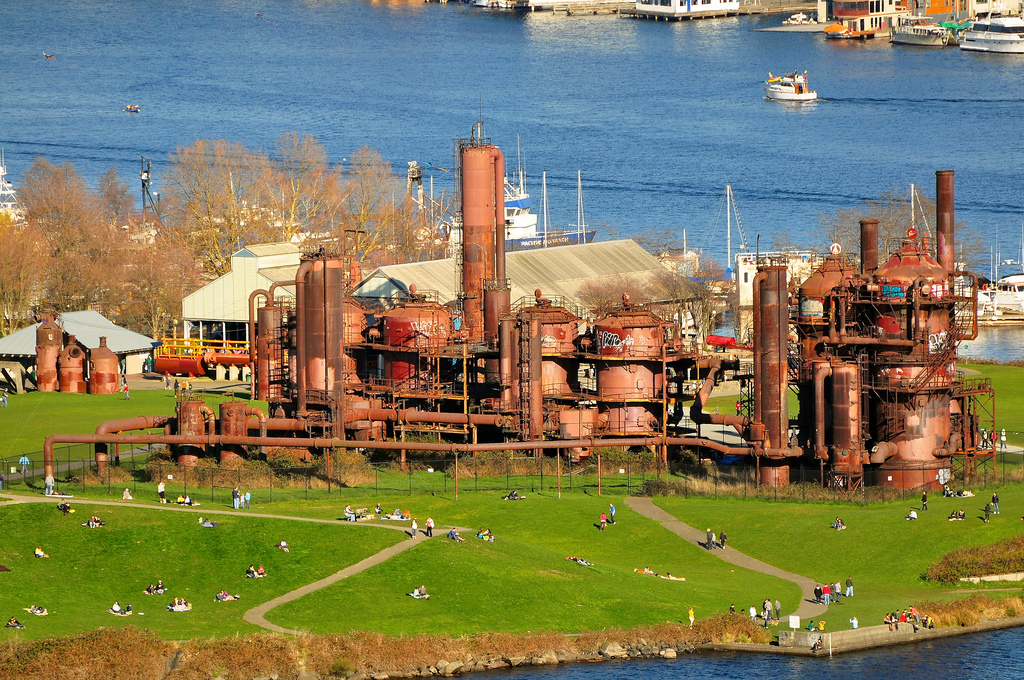
The UW's ENVIR 480: Sustainability Studio class in the Program on the Environment presents students with a sustainability topic which they engage in as part of an experiential learning course. The topics change each quarter - this spring, the students researched the UW's environmental history. This is part of a series of posts by the students on some of the information they uncovered.
Gas Works Park, originally known as Brown's Point, was not always a gathering place for UW students and the greater Seattle community. At one point, it was a massive industrial center used to supply Seattle with electricity and synthetic gas.
In 1906, the Seattle Gas Light Company opened their new gasification plant at Brown’s Point. Despite growing complaints from its neighbors about air pollution, it was Seattle’s primary source of power until hydro-electric power began to supplant it in the 1930s. With Seattle’s transition to natural gas, the plant was unable to stay afloat and officially closed in 1956. This switch left Brown's Point a neglected toxic wasteland, full of unused industrial equipment.
Following its closing, Councilwoman Myrtle Edwards spearheaded a notion to acquire the land and preserve Seattle’s natural beauty. Edward’s plans became reality. In 1962, the City of Seattle bought the plant for park purposes.
In years to come, this site would become the first industrial reclamation projects nationwide. Headlining the project was Richard Haag, a Seattle-based landscape architect and one of the founders of the University of Washington’s Landscape Architecture program.
Much to the chagrin of locals, who wanted to remove all traces of the gasification plant, Haag preserved the gasification plant in his design plans. He felt that there should be some sort of recognition given to the history of the site and the importance it played in the history of Seattle as a city.
The first step was to get a design plan to present to the City’s parks and recreation department. In 1969, Haag began city sponsored studies to see how conceivable it would be to keep some of the site's boiler structures, having only 3 years to change the City's mind about demolishing them. Fortunately, he convinced the city government to accept his plan of building a park around some of the major boiler structures rather than wiping them all out and starting from scratch.
But, the process wasn’t without its challenges. Haag had to develop a design that addressed the heavy soil pollution left behind from when the plant was still active. By adding oil-degrading enzymes to the soil, as well as organic materials to fertilize the growth of soil microorganisms, Haag triggered the natural breakdown of toxic pollutants in the topsoil. The plant was also cleaned with a non-chemical based cleaner.
Ultimately, the design and preservation of the structures was produced in one of the most environmentally friendly and progressive ways to date. Haag’s methods were revolutionary, setting the stage for Seattle’s ecofriendly architectural design elements seen throughout the Puget Sound region.
By Nick Schippers and Vincent Lin
Photo courtesy of Flickr user Tony Cyphert
For more information on the environmental history of UW, see our interactive timeline "A Century of Sustainability" at sustainability.uw.edu/timeline.